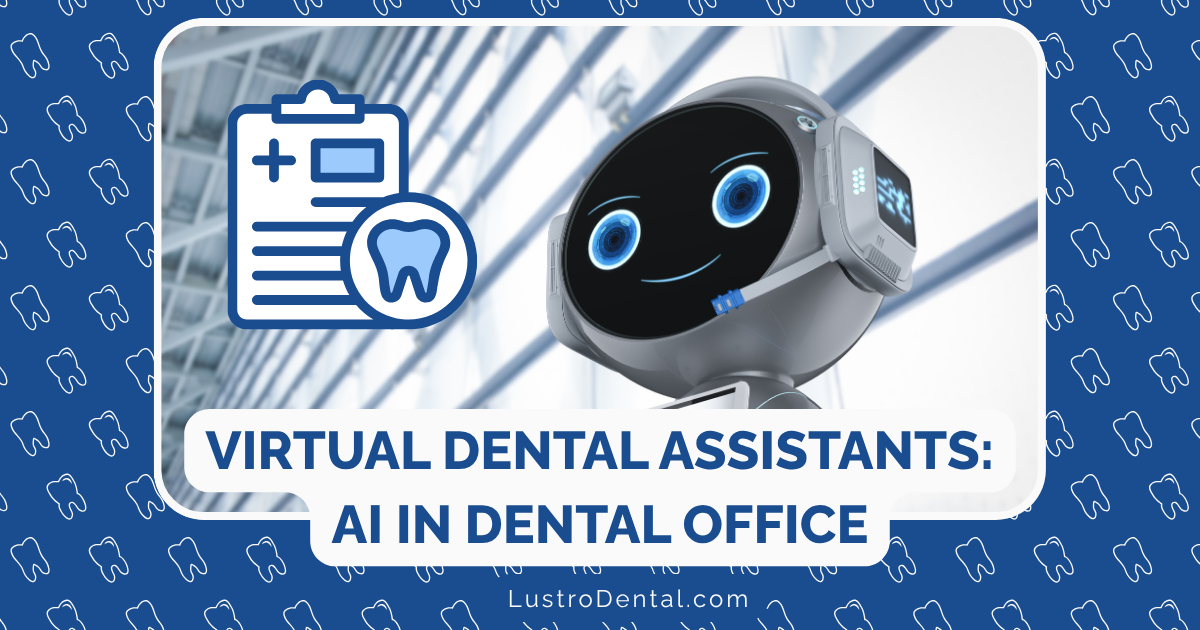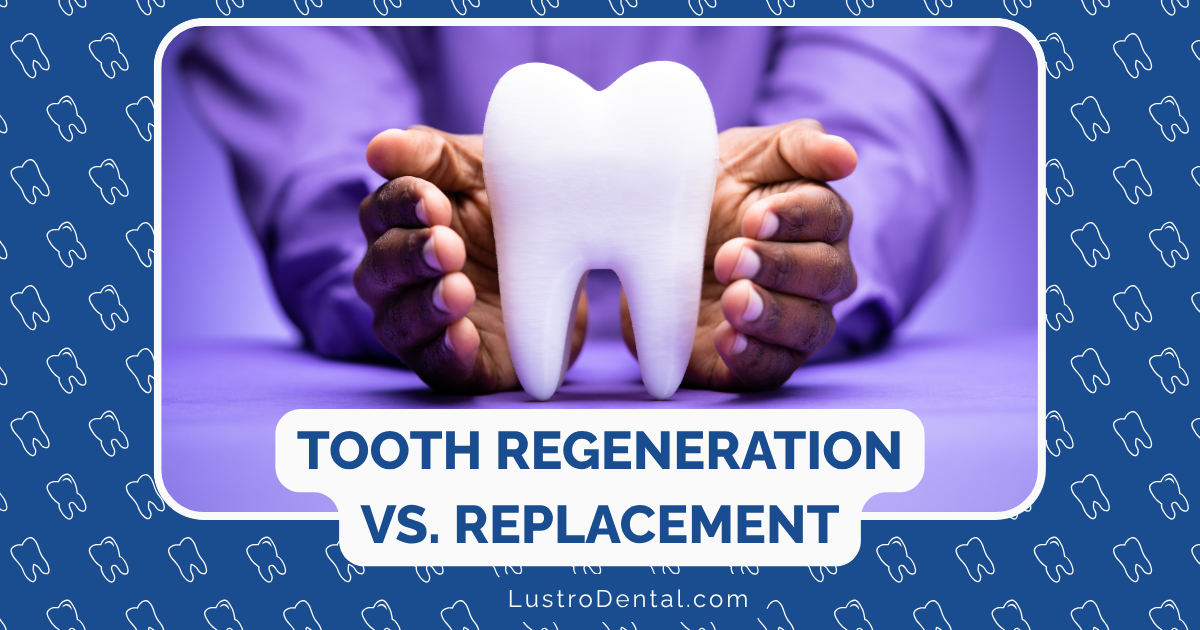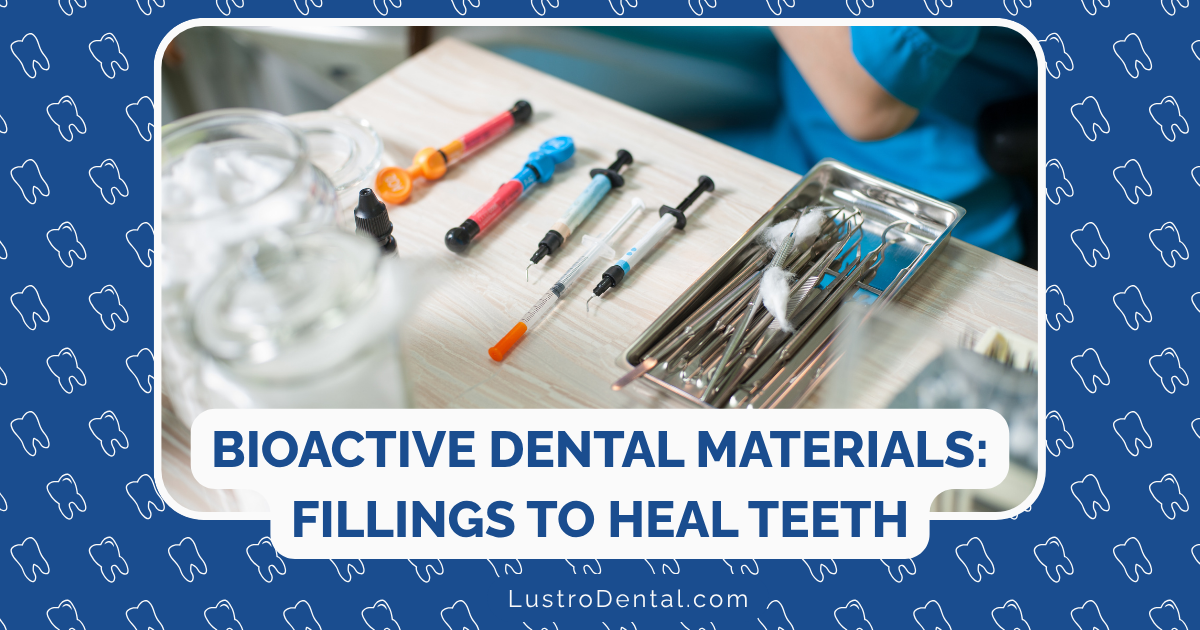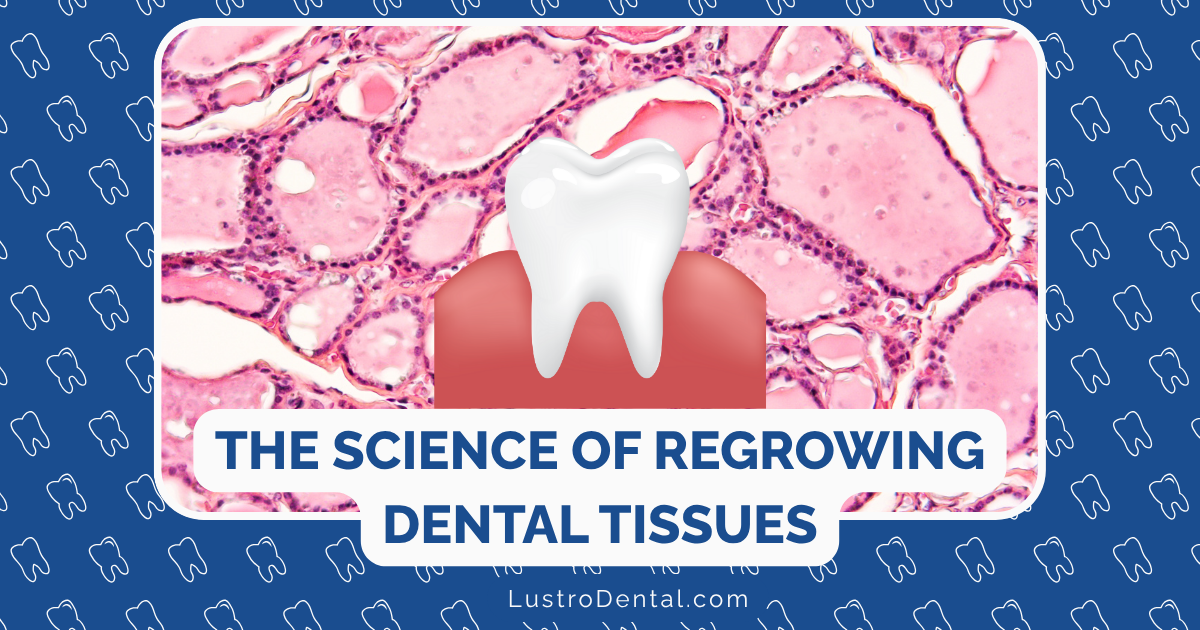Virtual Dental Assistants: How AI Is Streamlining the Dental Office

The modern dental practice faces numerous challenges: packed schedules, administrative burdens, staffing shortages, and the constant pressure to provide exceptional patient experiences while maintaining profitability. Amid these demands, a technological revolution is quietly transforming dental offices across the country. Virtual dental assistants—AI-powered solutions designed specifically for the dental industry—are changing how practices operate, allowing dental professionals to focus more on what they do best: providing quality care to patients.
What Are Virtual Dental Assistants?
Virtual dental assistants (VDAs) are sophisticated software platforms that leverage artificial intelligence to automate and enhance various aspects of dental practice management. Unlike general virtual assistants like Siri or Alexa, these specialized tools are built specifically for the dental environment, with deep understanding of dental terminology, procedures, scheduling needs, and practice workflows.
Dr. Sarah Johnson, who implemented a virtual assistant in her suburban practice last year, explains: “I initially thought of virtual assistants as just glorified scheduling tools, but modern VDAs are comprehensive practice management solutions. They handle everything from appointment scheduling to patient communications, insurance verification, and even clinical documentation support.”
These AI-powered assistants generally fall into two categories:
1. Administrative Virtual Assistants
Administrative VDAs focus on front-office and back-office tasks, including:
- Appointment scheduling and management
- Patient communications (reminders, follow-ups)
- Insurance verification
- Billing support
- Form completion and documentation
- Patient recall management
2. Clinical Virtual Assistants
Clinical VDAs support the treatment aspects of dentistry:
- Voice-controlled charting during examinations
- Treatment planning assistance
- Diagnostic support through image analysis
- Patient education content delivery
- Procedure documentation
- Inventory management for clinical supplies
Many modern solutions combine both administrative and clinical features into comprehensive platforms that integrate with existing practice management software.
How AI Virtual Assistants Are Transforming Dental Practices
The impact of virtual dental assistants extends across nearly every aspect of practice operations:
Streamlining Appointment Management
Perhaps the most visible benefit comes in appointment management. According to a study by the American Dental Association, dental practices implementing AI scheduling assistants report a 27% reduction in no-shows and a 15% increase in schedule optimization.
Modern AI scheduling tools can:
- Provide 24/7 appointment booking: Patients can schedule appointments anytime through website widgets, text messaging, or voice interfaces.
- Intelligently fill cancellations: When cancellations occur, the system automatically identifies ideal patients to contact based on treatment needs, previous appointment history, and scheduling preferences.
- Optimize provider schedules: AI algorithms analyze procedure durations, provider preferences, and patient characteristics to create optimized daily schedules that maximize productivity while preventing provider burnout.
- Send smart reminders: Instead of generic reminders, AI systems send personalized communications based on patient history, preferred contact methods, and previous response patterns.
Dr. Michael Chen of Brightsmile Dental Group notes: “Our virtual assistant reduced front desk calls by 62% while actually increasing our appointment volume. The system confirms appointments automatically, fills last-minute openings, and even prioritizes which patients to contact for specific schedule gaps.”
Enhancing Patient Communications
Beyond scheduling, virtual assistants are revolutionizing how practices communicate with patients:
- Personalized messaging: Communications tailored to individual patient history, preferences, and needs.
- Multi-channel engagement: Seamless interaction across phone, email, text, web chat, and social media.
- Automated follow-ups: Post-appointment check-ins, care instructions, and satisfaction surveys.
- Treatment reminders: Customized messages for patients due for specific treatments or preventive care.
- Review management: Automated requests for reviews from satisfied patients and monitoring of online reputation.
Research published in the Journal of Dental Practice Management found that practices using AI-powered communication tools saw a 34% increase in patient satisfaction scores and a 23% improvement in treatment plan acceptance rates.
Streamlining Administrative Workflows
The administrative burden in dental practices has grown substantially in recent years. Virtual assistants are helping to reverse this trend:
- Insurance verification: Automated verification of patient benefits before appointments.
- Documentation assistance: Voice-to-text transcription and structured documentation of patient encounters.
- Billing support: Claim preparation, submission tracking, and payment processing.
- Form completion: Digital intake forms with intelligent data capture and verification.
- Compliance management: Tracking of required documentation and regulatory requirements.
According to the Dental Economics Annual Practice Survey, practices using AI administrative tools report saving an average of 15-20 hours of staff time per week—time that can be redirected to patient care and practice growth initiatives.
Supporting Clinical Decision-Making
While administrative applications often receive the most attention, clinical applications of virtual dental assistants are equally transformative:
- Voice-controlled charting: Hands-free documentation during examinations.
- Treatment planning assistance: AI analysis of patient history, current conditions, and evidence-based guidelines to suggest optimal treatment approaches.
- Diagnostic support: Integration with imaging systems to highlight areas of concern and suggest potential diagnoses.
- Procedure guidance: Step-by-step guidance during complex procedures, especially for less common treatments.
- Patient education: Automated delivery of condition-specific educational content to improve treatment understanding and acceptance.
Dr. Lisa Rodriguez, a periodontist who has integrated clinical AI assistants into her practice, shares: “Having an AI assistant that can pull up relevant patient history, document my findings as I speak, and even suggest treatment options based on the latest research has transformed my clinical workflow. I’m more thorough, more efficient, and frankly, less exhausted at the end of the day.”
Real-World Benefits: The Impact on Dental Practices
The adoption of virtual dental assistants is driven by tangible benefits that address the core challenges facing modern dental practices:
1. Improved Operational Efficiency
Practices implementing comprehensive virtual assistant solutions report significant operational improvements:
- Reduced administrative time: Staff spend less time on routine tasks and more time on high-value activities.
- Optimized scheduling: More efficient appointment booking leads to better provider utilization and increased production.
- Streamlined workflows: Automated processes reduce bottlenecks and improve practice flow.
- Reduced paperwork: Digital documentation and automated form processing minimize paper handling.
A case study published by the Dental Practice Management Association found that a mid-sized practice implementing an AI virtual assistant increased production by 18% while reducing administrative labor costs by 22%.
2. Enhanced Patient Experience
Today’s patients expect convenience, accessibility, and personalization—areas where virtual assistants excel:
- Convenient access: 24/7 appointment booking and information access.
- Reduced wait times: More efficient check-in processes and optimized scheduling.
- Personalized communications: Messages tailored to individual needs and preferences.
- Consistent follow-up: Automated check-ins and care instructions improve post-treatment experience.
- Educational support: Timely delivery of relevant educational content improves treatment understanding.
Patient satisfaction surveys conducted by Dental Patient Success indicate that practices using AI assistants see a 29% increase in patient satisfaction scores related to practice communication and convenience.
3. Staff Satisfaction and Retention
In an era of staffing challenges, virtual assistants can significantly impact team morale and retention:
- Reduced burnout: Automation of repetitive tasks decreases staff stress and burnout.
- Focus on meaningful work: Team members can focus on patient interaction rather than paperwork.
- Skill development: Staff can develop higher-level skills as routine tasks are automated.
- Work-life balance: More efficient operations can reduce overtime and improve scheduling.
Dr. James Wilson, who implemented a virtual assistant in his three-location practice, notes: “Our staff turnover dropped dramatically after implementing our AI assistant. Team members no longer feel overwhelmed by administrative busywork, and they can focus on the aspects of dental care they actually enjoy.”
4. Financial Impact
The bottom-line impact of virtual dental assistants can be substantial:
- Increased production: More efficient scheduling and reduced no-shows lead to higher production.
- Reduced labor costs: Automation reduces the need for additional administrative staff.
- Improved collections: Better insurance verification and patient communications improve collection rates.
- Marketing efficiency: Automated patient engagement improves marketing ROI.
A financial analysis by Dental Economics found that the average return on investment for comprehensive virtual assistant implementation was 3.2x in the first year, with increasing returns in subsequent years as systems are optimized.
Implementing Virtual Dental Assistants: Practical Considerations
For practices considering virtual dental assistants, several key factors should guide the selection and implementation process:
1. Integration Capabilities
The most effective virtual assistants seamlessly integrate with existing practice management systems. Before selecting a solution, practices should:
- Verify compatibility with current practice management software
- Assess integration with imaging systems and clinical tools
- Evaluate the need for additional hardware or infrastructure
- Consider future scalability as practice needs evolve
2. Customization and Training
Virtual assistants become more effective as they learn your practice’s specific workflows and preferences:
- Look for solutions with customizable workflows and terminology
- Assess the initial training process and ongoing learning capabilities
- Consider the level of technical support provided during implementation
- Evaluate how easily the system can adapt to practice-specific protocols
3. Security and Compliance
Given the sensitive nature of dental information, security considerations are paramount:
- Verify HIPAA compliance and data encryption standards
- Assess access controls and user permission management
- Understand data storage locations and backup protocols
- Review the provider’s security track record and certifications
The American Dental Association’s Center for Professional Success recommends that practices thoroughly review vendor security documentation and consider consulting with IT security professionals before implementing any AI solution that handles patient data.
4. Staff Adoption Strategy
The success of virtual assistant implementation often hinges on staff acceptance and adoption:
- Involve team members in the selection process
- Provide comprehensive training before and during implementation
- Start with high-impact, low-complexity features before expanding
- Celebrate early wins and address concerns promptly
- Designate internal champions to support the transition
Dr. Emily Martinez, a practice management consultant with Dental Practice Success, advises: “The practices that see the greatest success with virtual assistants are those that approach implementation as a team journey rather than a technology purchase. When staff understand how these tools will make their jobs easier and more rewarding, adoption follows naturally.”
The Future of Virtual Dental Assistants
As AI technology continues to evolve, virtual dental assistants are becoming increasingly sophisticated:
Emerging Capabilities
Next-generation virtual assistants are beginning to incorporate:
- Predictive analytics: Identifying patients at risk for specific conditions before symptoms appear
- Advanced voice recognition: More natural conversational interfaces for clinical documentation
- Expanded diagnostic support: AI-assisted analysis across more types of dental conditions
- Patient behavior prediction: Anticipating patient needs and potential issues before they arise
- Integrated telehealth: Seamless coordination of virtual and in-person care
Integration with Other Technologies
The power of virtual assistants is multiplied when combined with other emerging dental technologies:
- 3D printing: Coordinating design and production of prosthetics and appliances
- Intraoral scanners: Processing and analyzing digital impressions
- Teledentistry platforms: Facilitating remote consultations and follow-ups
- Practice analytics: Providing actionable insights from practice data
- Patient wearables: Incorporating data from patient monitoring devices
Conclusion: The Human-AI Partnership in Modern Dentistry
As virtual dental assistants become more prevalent, it’s important to recognize that they represent a partnership rather than a replacement. The most successful implementations augment human capabilities rather than attempting to substitute for them.
Dr. Robert Johnson, Director of the Digital Dentistry Institute, emphasizes: “The future of dentistry isn’t AI replacing dental professionals—it’s AI handling routine tasks so that dental teams can focus on the aspects of care that truly require human judgment, empathy, and expertise.”
Virtual dental assistants are transforming dental practices by automating routine tasks, enhancing communication, optimizing schedules, and supporting clinical decision-making. As these technologies continue to evolve, they promise to address many of the core challenges facing dental practices today: operational efficiency, patient experience, staff satisfaction, and financial performance.
For dental professionals navigating this technological transition, the key is to approach virtual assistants not simply as cost-cutting tools, but as practice enhancers that allow the entire team to practice at the top of their abilities—focusing more on patient care and less on administrative burdens. In this context, AI becomes not just a technology investment but a fundamental shift in how dental care is delivered and experienced.
Has your dental practice implemented any AI or virtual assistant technologies? What has your experience been? Share your thoughts in the comments below!







